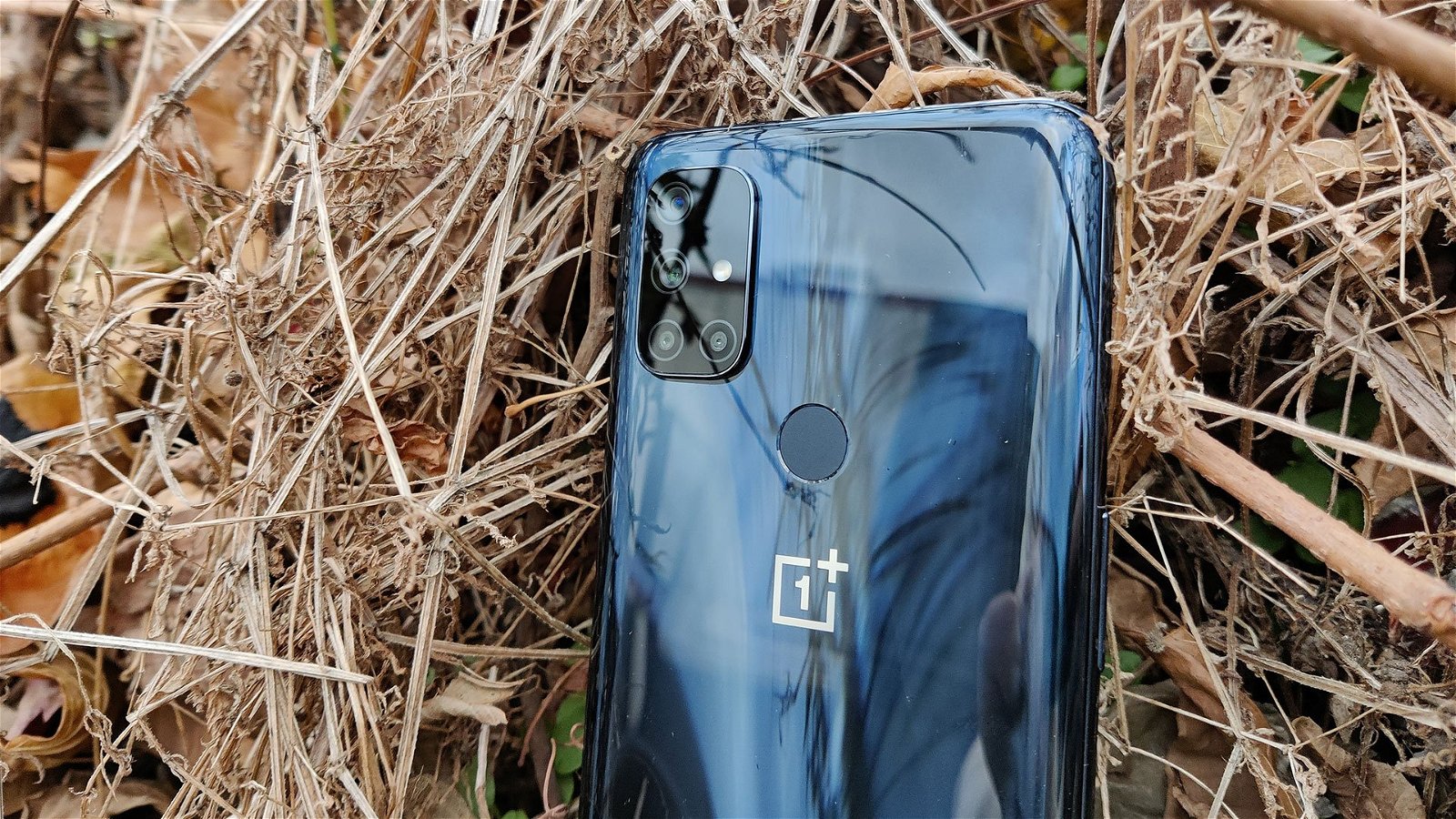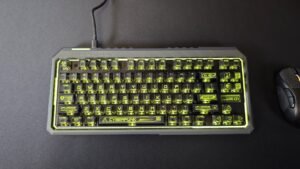The OnePlus Nord N10 5G is the company’s latest answer for a budget-friendly upgrade which brings customers into 2020 without breaking the bank. It packs a passable offering of features through a visually dazzling screen and photography which comes along with the OnePlus niche. But cutting the price down includes stripping away much of some basic add-ons which make the N10 feel a bit dated. More problems start to outweigh the benefits and users might feel a bit left behind in the mobile market with less tactile functionality and missing shortcuts. The result is a product which looks, feels and qualifies as a fresh OnePlus smartphone which works better as a short-term investment towards some of the brand’s heavy-hitters. But its greatest tool comes from its upgraded Qualcomm processor, which gives mid-tiered phone users a jump to 5G networking. Its speeds are a noticeable improvement for users who need it most in different environments.
A cheaper phone, but fancier surprises at first sight
The visual dazzle is felt right away when users are first setting up their phones. Following OnePlus tradition, its 6.5-inch display is really something to behold at a glance. Colours and backlight pop especially well with light pages, which users will be spending most of their screen time on. This is factored in with the Nord N10‘s first compromise in using an LPS LCD display over OLED to save costs. But the device’s concentration towards color balancing makes black text and other objects deep, giving off the illusion of crispy UI from top-tiered siblings. This makes the screen a tantalizing experience which becomes more enjoyable with customization, as icons and reading-based apps pop with depth. It’s a smart software optimization which comes with using such a big display. But much of its upscaling over LCD is stretched with a slightly aging 1080×2400 resolution, which bites off a bit more than it can chew over the 6.5-inch body. For apps not completely optimized over the ever-changing OnePlus platform, nitpickers can notice some slightly blurred visuals or other pictures which could be much clearer.
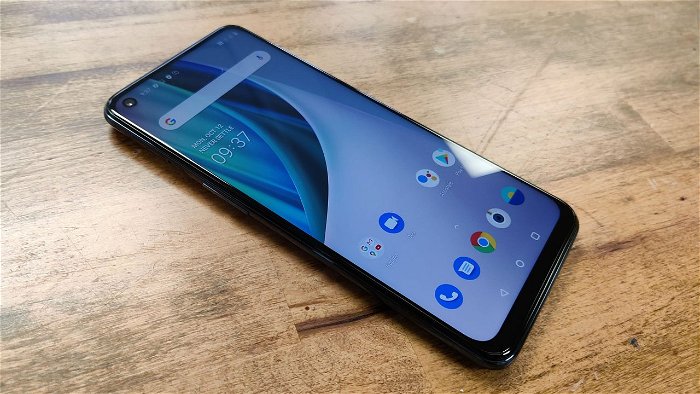
Impressively, the budget-friendly features in the Nord N10 have managed to preserve some of the same qualities as the flagship OnePlus 8. They sport similar sizes at the 6.5-inch range with a 20:9 aspect ratio to give the phone more screen. This gives users one of the phone’s best values with a still-noticeable upgrade without a natural fluid AMOLED for deeper colours. FHD+ is a sort of ubiquitous standard in most 2020 phones, including the Nord N10. Under its smaller asking price, it’s an acceptable addition which still offers more than enough detail. But one of the more interesting parts comes from adding in a 90Hz refresh rate for an even smoother scrolling experience. Software and navigation feel more natural at a comfortable frame per second. It’s surprisingly great to see such a feature in a budget device which tips towards premium. An option to set the screen to 60Hz can show a clear difference in choppier motions next to the native 90Hz. As a fast scroller, the upgraded refresh rate was a personal favourite which helped with response time in areas where the OnePlus Nord N10 needed it most (more on this in its performance later). More importantly, users moving on from more expensive brands as far back as 2018 still get a neat upgrade at face value. This translates to some naturally-moving content from games to a few select videos online, allowing for longer screen-on time and less eye strain from choppy latency. It’s clear that the OnePlus Nord N10 looks to redefine cheaper phones by giving users a taste of premium features – and does so with better value.
The 1080p standard tries to break into 2K territory with optimization, but still feels a bit dated when it’s put to the movie test. But the full 20:9 ratio, combined with its 83.5% screen-to-body-ratio make web content a real treat. Most videos can be stretched, but naturally fit without cropping away too much. This gives the Nord N10 another noticeable (premium) effect of pure bezel less viewing which makes two-hour binges incredibly possible. 1080p videos are supposed to be a natural fit for its relevant format, but can feel noticeably blurry due to the phone’s extended horizontal pixels. Some videos, even when zoomed in, can still give off a small widescreen bar to awkward proportions. The screen’s budget compromises are clearer with some basic functionality. Thankfully, native apps including Google Chrome, Spotify, Reddit and Twitter still look incredibly beautiful over the Nord N10. Its lack of OLED will make basic green, blue and red look fluffier than usual though. Unfortunately, this includes black elements which come off as grey. For text and ebooks, this can be a problem for users who can struggle to read text with white backgrounds. It was a clear problem for me as some grey blobs were muddled together. But this is with brightness maxed out, while on-screen tones appear better according to your tolerance. Because the display sports a big fat aspect ratio, text and other page elements are still legible. It’s made better with a slider to scale items without changing any resolutions. This uses Android to naturally optimize its native app content – something which works so well to make a user’s transition to 6.5-inches a breeze.
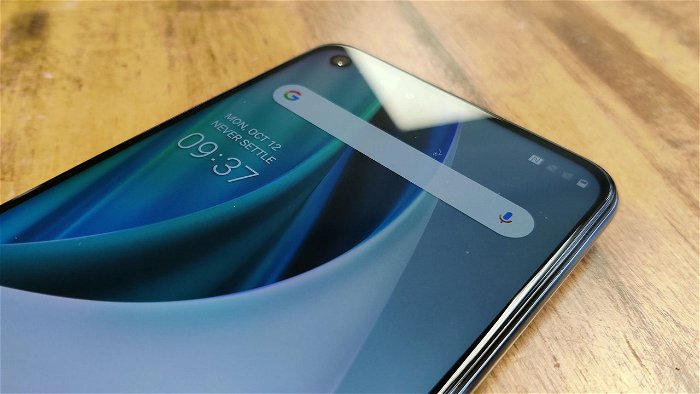
In preserving the screen-to-body ratio, the Nord N10 leans more into size in order to up its value (even if it meant jamming its hardware). Following premium smartphones, OnePlus has put the Nord N10‘s front camera lens in the screen. Users can either ignore or be haunted by a sizeable black dot on the top-left corner of the device. For me, I didn’t find it too much of a problem, while some of Apple’s iPhone X vibes seeped in (with less intrusion of course). Because the camera dot is part of the status bar, it fits in with other elements (clock, network meters, battery) without interruptions. It’s only when users are watching fully-scaled movies that the dot feels like a weird sight to behold. But a setting lets users shorten the screen to eliminate the view, at a cost for resolution.
A wonderful display with clumsy user-friendly execution
The Nord N10, like OnePlus’ other smartphones, pass the basic hyperresponsivity when thumb meets glass. Unfortunately, that’s it.
I had an enjoyable scrolling experience thanks to its enhanced refresh rate, making touch navigation a winner on this device. I had no major issues looking for my app in seconds using the full shelf of content. But where the Nord N10 excels in swiping, its lack of capacitive touch really does hurt the device’s user experience. The result was having difficulties typing, as the LCD’s sensitive interface constantly created typos. Words regularly get extra characters without properly hitting a key’s center. The space bar’s off-center position made me miss it. Due to the Nord N10‘s clunky feedback, typing or tapping on links felt painful at inconvenient times. Its OS, shared with its latest line of devices, should have been well-equipped to deal with larger fingers. But sadly, there’s no real impact from natural gestures (making the phone less of an extension). More problems come from its nice, but intrusive bezel-free frame. Falling into the rep of advanced phones, palms will be touching over the screen. This is where the OnePlus Nord N10 catches that response and confuses the overall feedback. The bigger the palm, a likelier chance users will be ejected from their keyboards, exit apps or back out of a page. It adds to the phone’s somewhat frustrating multi-touch interface which can use more practice out-of-the-box. In preserving the screen-to-body ratio, the Nord N10 leans more into size in order to up its value (even if it meant jamming its hardware and sacrificing functionality). Aspects including battery usage and high brightness can warm up the screen, making the touch feel either funny or comfortable.

It felt a bit awkward to feel my thumbs gliding over a surface that feels all-too oily. This is a real fingerprint magnet after users get an impression of its squeaky-clingy-clean body after unboxing. A slippery impression definitely did plenty for my hands to slip on the Nord N10 before it crashed on my nose in bed. In using it at home, it’s good to clutch this sliver of a phone much tighter as you carry it around the house. But thanks to a slightly dated 2.5D Gorilla Glass 3, the screen will take a few good hits before it shows some structural weakness. Luckily, my device held up together pretty nicely with some hard touches, typical resting places around tables and other textured surfaces. Obviously, its status as a budget device gives it a huge margin for durability. But OnePlus has crafted a very sleek-looking device which surprisingly will last for years with some basic love and care. Its display isn’t curved, making the addition of tempered glass screens an even bigger walk in the park. Of course, a case will definitely seal the Nord N10‘s longevity and significantly reduce the chances of palm-schmushes-screen. I definitely found the budget phone’s bezel-less design a jump into 2020 without the need for curvature.
The OnePlus Nord N10‘s haptics are definitely needed to alleviate some touchscreen problems. Having a vibration feedback helps users catch any mistypes and other issues when they get past the phone’s learning curve. But after a few days of use, I felt more in control of my device’s capacitive touch. This matters more with various gestures. I stuck to traditional buttons and typing in my early use. Its more advanced swipe-based features felt tacked-on due to its muddled functionality. The Android-based swipe keyboard works, though there’s less visibility for my thumb when it drew to the next letter. I also let go of the google assistant shortcut that can be pulled up from the bottom corners. Because my palm was constantly touching the corner as I was holding it, Google’s assistant would jump up at random times to annoying degrees. It’s best to keep this feature off in favour of the search bar widget or other button-based shortcuts. Weirder problems came up when I tried to access the device. A glitch involving the pocket-lock would keep the touchscreen disabled even when it recognized my hands. This made the screen completely pretty regularly out-of-the-box, forcing me to lock the device a few times for it to come back. A full restart seems to have eliminated this frustrating problem, though I haven’t seen it happen again after. Either way, the Nord N10‘s poor haptics bring out the worst in what could have been a stellar device compared to other basic options. Because it’s an Android-based system, users can make extensive tweaks with custom keyboards to make the typing bearable. They can also toggle a few accessibility switches to get the long-presses, navigational buttons and shortcuts just right for getting around many pet peeves.
Faster network, way slower usability
OnePlus has held back on giving the Nord N10 a fully-satisfactory performance with a serviceable processor. Its Qualcomm Snapdragon 690 does something special in giving budget phones 5G connections. This enables higher service speeds and puts the Nord N10 on the same steps as future devices. It’s easily the phone’s biggest asset for giving a reception a noticeable boost in times where it can make a difference. For usability, OnePlus has outdone itself in putting a new standard for networking without an extra cost. From Netflix in underground commutes to roaming capabilities and online gaming breaks, OnePlus breaks the 5G barriers and shares the spoils without premium costs. The Nord N10 boldly takes a charge into 5G and bravely keeps up with some of the best phones in the market. The 5G capabilities are also set up easily over the phone. A few new options in the network settings even let me scale my services back to 4G, 2G or older platforms if I wanted. It’s worth noting that the phone’s optimizations for 5G are incredibly great in balancing speeds without eating away monthly data. A simple switch enables Smart 5G, which matches its power usage with nearby 5G networks. This delivers efficiency only when users need it and greatly reduces 5G usage in the background. Phone addicts get a bigger benefit with 5G’s superb optimization for power. Surprisingly, the Nord N10 doesn’t chew up more battery when using the upgraded networks – a welcome sign that OnePlus has made an affordable 5G device which actually works with it instead of against it. Arguably, smart spenders looking for a 5G upgrade can look to the Nord N10 as a gateway (with enough upgrades for a satisfying time).

A special shoutout goes to the Nord N10‘s consistency for Wi-Fi. It lacks the newer Wi-Fi 6 (802.11ax) for dream-like speeds, but users can still get a bang for their buck. Its built-in 802.11ac gives it standard 5GHz access, throttling wireless speeds as high as 450mbps on a healthy router connection. With phones getting more attention at home, the OnePlus Nord N10 does a great job at convenience when I needed to google or addictively check my social media. An extensive slew of features let users share their Wi-Fi with a QR code, read signal strength and set VPNs easily. It’s a “no news is good news” deal for the Nord N10, speaking to OnePlus’ consistency for a device which is always tethered to some kind of a connection.
I can’t fully love the Qualcomm Snapdragon 690 CPU for its horrible optimizations with other parts in the phone. When the CPU works with the Nord N10‘s 6GB RAM, it’s a disappointing slog at first. For some reason, the Nord N10 relies on caching and recalling memory for speed. This means that the device is awfully slow with delays, but improves as users spend more time with it. This was apparent out of the box, as using apps for the first time hit me with three-second delays. The times could also bloat with other third-party apps, including Spotify which (still) hung on startup. Even after the app was loaded, songs would refuse to select or play. Exiting the app and reloading it would make it usable, but users shouldn’t have to endure this in a 2020 phone. This was worse with less-demanding apps including Reddit, which would take four seconds to deliver the home page. Fortunately, Google’s dedicated optimizations for the OxygenOS make those apps speedy. The RAM-heavy Chrome app works surprisingly fast along with its search apps. Other native apps like the Play Store load with lightning speeds, though software updates made my device noticeably slower in the background. Even on a tighter budget, OnePlus has hurt the overall usability by adding a new processor. One of the Nord N10‘s worst examples of this comes with a half-second delay with Bluetooth audio and controls. It’s painful to watch videos with audio out-of-sync, while using my Galaxy Bud controls are incredibly slow.
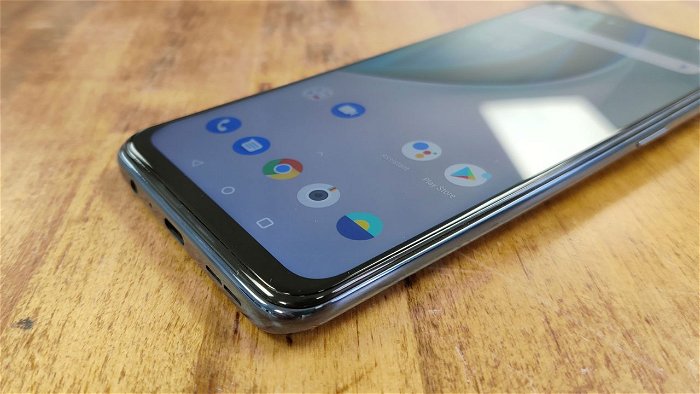
Patience does pay off for the experienced OnePlus Nord N10 user. After almost a week of use, the phone had reached some enjoyable speeds. Apps loaded 50% faster on a first boot, particularly Instagram which takes up some performance-heavy memory. The 6GB RAM started to become familiar with my usage and loaded most of my apps as quickly as they did on phones like the now budget status Samsung Galaxy Note 8. Despite my continuous power struggle with a mid-tiered phone and wanting faster performance, it felt like OnePlus took a major step back from giving users a full upgrade or replacement from higher-priced ones. With performance already tanking, it’s bound to worsen over updates and other bloating from the Nord N10‘s expanding registry. For memory, it’s admirable that OnePlus has followed through with expandable memory. At a lower price, users get some generous space with 128GB of internal storage. It can be expanded with up to 512GB of MicroSD storage. For the first-time user, it’s such a big bonus to transfer a memory card over without a hitch. They can also get options to save content on the MicroSD card to preserve on-board storage. This is bound to significantly help with speeds, even when owners should have breakneck speeds at the start.
Sounds like a sour deal…
Unsurprisingly, users get what they pay for out of the Nord N10‘s speakers. Its dual stereo speakers on the top and bottom don’t impress. Of course, they do enough to pass loud audio straight from the phone when headphones are not an option. The quality is dampened without a crisp filter, making songs way too unbalanced with treble overpowering vocals. Making the sound worse is its messy tuning for multiple file formats. No matter the quality for streaming or playing raw files, the Nord N10‘s speakers will create a dampener. For some apparent reason, the dual speakers seem to work more beautifully over watching movies. Netflix binges with its widescreen will feel more cinematic. Its top and bottom speakers work in tandem with a film’s stereo audio. Since the top and bottom speakers are now right-to-left horizontally, it was a clever way to throw in surround sound. This adds to the Nord N10‘s list of impressive features, as sounds can travel from the left to right speaker and pull users deeper into any video.
On headphones, the audio experience is pretty well optimized. An obligatory noise cancelling feature is there to work with a majority of devices which support it. Bluetooth headphones can also improve in quality thanks to an awesome Direac Audio Tuner. But next to dedicated tools like Dolby Atmos or Apple’s EQ, Dirac feels like a serviceable presence. It only has a Dynamic, Movie and Music enhancement while users can turn these off completely. I found the Movie one to be the best, as it offers the clearest sound (making the rest laughable by comparison). In a huge slap to the face against other leading phones, the OnePlus Nord N10 5G includes a headphone jack. Obviously, users looking to go old-school can plug in their favourite buds with unlimited power and zero latency from Bluetooth. In a mid-tiered phone, it’s nice to consider a chunk of users who missed the 3.5mm feature from premium devices. But for wireless users, they receive an added benefit of seeing a battery level for their headphones on the status bar. It’s usually a hit-or-miss inclusion, but OxygenOS’ subtle consideration for this goes a long way for music lovers (and we at CGMagazine definitely noticed).
More on hardware, less on software
The Nord N10 is incredibly weird for flaunting some premium features beyond its asking price, then leaving out some of the most basic features in a new smartphone. Its OxygenOS reaps the same benefits of Android architectures. This gives users a near-limitless way of customizing their themes, icons and even renaming apps. For the creative users, they can even use the screen’s extended resolution to display some beautiful wallpapers. Widgets continue the Android tradition. Users can turn most apps into informational gadgets without accessing them entirely. At face value, these features easily turn users away from iOS. Of course, these essential additions do little for performance or battery – something OnePlus has learned for years with OxygenOS.

But there are just as many frustrations to be had with OxygenOS. Samsung and Google Pixel owners will have an incredibly sad time knowing where the OnePlus Nord N10 stops with its features. For starters, its budget cuts included leaving out some pretty essential hardware. There is no longer an LED indicator to tell you notifs or charge status when the phone is closed. A vibrate switch featured in most OnePlus phones is absent. To switch to the vibrate mode, users have to press the power key and volume up. But it’s impossible to switch it back to sound mode without going into Settings when most Android phones have a toggle. It’s easily one of the Nord N10‘s worst features ever. The flashlight with its camera lacks a brightness setting as well. Worst of all, no apps or sub-widgets can go on the lockscreen. The keyboard’s alt key is also sticky, forcing users to press it again after picking a character (most Android phones auto-return to the letters after this). As much as I missed many of these common Android features, subtle or big, the Nord N10 isn’t water resistant and lacks IP ratings. Even for a mid-tiered phone, OnePlus has skimped on things which depreciate the N10‘s value as a long-term device.
A gloriously affordable 4K camera
OnePlus’ knact for impressive photography extends to the Nord N10. An impressive camera tips the scale for much of the phone’s budget cuts. The phone packs four rear cameras for a wide variety of levels. Most of the budget has been soldered with a 64 MP rear main camera, a smaller 8MP Ultra Wide Angle lens, 2MP Macro and Monochrome lens. It’s incredibly impressive to see owners getting the most out of their cameras, with extensive options to snap pictures with the ridiculously huge 6944×9248 resolution. The camera is arguably on the same page as most high-caliber devices in 2020, making it more surprising that owners are getting this for half the price. Its 64MP rear camera easily provides a balance of clarity and deep colours instantly. The focus easily finds the intended subject in portraits or objects, though it ca n lack depth indoors. But outside, OnePlus has kept their grip for some awesome scenery with open environments. Those travelling with the Nord N10 have tons of capacity to take some vivid landmarks which are enhanced with natural colours and sharpness. Dimly-lit shots can benefit with the 16MP lens, which add more light with dynamic range at the cost of depth. I had some particular fun getting extreme close-up shots with the Nord N10‘s macro lens, though it’s incredibly grainy without some natural light.
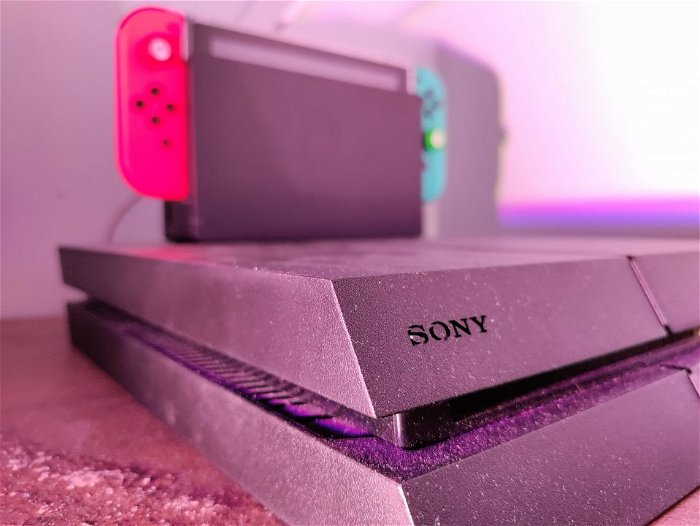





The OnePlus Nord N10‘s camera can feel like a significant upgrade as its video capabilities blow many mid-tier offerings out of the water. Multiple quality options tell users how much memory gets chewed up every 30 seconds. This also knocks off any time limits due to overheating, giving users all the time to film scenes without worries. The standard options for 1080p and 60fps come without any input lag. A real highlight comes from filming at 4K at 30FPS, with the option to film at the highest CINE 21:9 aspect ratio for the big screens. It’s an impressive feat to include much of the core essence from the complete OnePlus 8 devices under such an underdeveloped package – giving the Nord N10 a saving grace for photographers on a budget. The front camera is equally impressive, sporting a 16MP camera which makes selfies prettier and unflattering details more accentuation. But the wider range on the front camera gives subjects a smaller, slimmer appearance. The 3465×4608 resolution is enough to take in a big group of subjects when used horizontally to great detail. Social media posters will have a wonderful time with the front camera’s 1080p at 60fps video capture which holds its own against other competitors. Each picture can be accessed with details, giving off some unique graphs for light exposure, white balance and other handy info for professionals. The Pro mode was an incredibly tailored experience, sporting a meter for stabilization and graph for light.
These handy features set OnePlus apart as a very niche device for photographers. It also brings the Nord N10 closer to a truly special mid-tier package for creators. Time Lapse, Panorama, Slow Motion and Nightscape return from previous OnePlus devices for extra levels of creativity, though these felt pretty tacked-on and I’d likely put them to the test in sportier situations.
Long live the all-day (or two) battery life!
We’ve come to the OnePlus Nord N10‘s biggest factor for budget and the battery does arguably batter than fully-priced phones. On a full charge, the 4300mAh will feel like a magical upgrade for older smartphone users. I was able to clock an estimated 27 hours with relatively balanced use. Using the Nord N10 for light emails, texting and social media guarantee a longer battery life without any tweaks. This is especially good news for adventurous users who are always on the move. I could also sleep with the phone on standby and wake up with 50% charge for the rest of the day. Of course, the battery life burns faster when users are playing games or watching videos for hours at a time. The Nord N10 starts to show some wear by losing about 8 percent after a full two-hour binge of Ghostbusters 2.

Out of the box, it’s a good sign that the phone will keep most of its battery integrity for two years until it really starts to deteriorate. This is where OnePlus’ proprietary Warp Charge 30T can bring the Nord N10 to 65% capacity in half an hour. Unfortunately, we never got to test this feature as our unit shipped with the EU charger. But this review won’t dismiss its capabilities, with our OnePlus 8 review stating “It was amazing to see how quickly this phone charges, even when on the verge of death.” With a big battery, the Nord N10 managed to charge slower than other phones, taking about 90 minutes to fully charge without a boost. I do miss the fast charging capabilities of a Samsung phone, though its accessories don’t give that much-needed charging kick on OnePlus devices. Regardless, it’s important for owners to charge accordingly, while the Warp Charge lasted the bigger OnePlus 8T about 800 charges. That’s about two and a half years assuming users charged their Nord N10 with Warp daily.
A master of unlocking
The OnePlus Nord N10 packs a ridiculously instant unlocking. Considering how much fun I had playing with this, there was absolutely no trouble using my biometrics. What’s impressive is how OnePlus has made security much easier for users and a nightmare for others. A brief setup can give users face recognition. Thanks to the front camera’s 1080p resolution, it somehow recognized me no matter how much I tried to fool it. The face recognition was so fast, a part of me thought the phone didn’t have any security. This comes with the Nord N10 reading your face in a millisecond and unlocking with a fast swipe up. It’s an absolute joy to use, while it only took one setup for the phone to completely remember me from every unflattering angle. No matter the setting, there was no unreliable moment with the face unlock – making it one of the best surprises in a budget phone. The standard option of fingerprints are back. The OnePlus’ signature biometric dot are on the back of the device. But it’s much smaller and difficult to blindly touch. But the rear fingerprint also recognizes edge touches, giving it a functional use. I still found myself naturally using my face and index finger to unlock the phone. Its security integrations with Google Wallet and other tightly-locked 2FA apps made the OnePlus Nord N10 my most trustworthy device to date.
Despite all of its drawbacks as a budget phone, the OnePlus Nord N10 5G is starting to grow on me as a daily driver away from an aging Note 8. It obviously lacks some of the higher-end features that come over the $1000 mark. But the N10 still managed to bring some sizeable upgrades in screen, comfy form factor and a back-to-basics usability that rare phone buyers can come to love. Its serviceable features in OxygenOS can still have room to improve with updates as apps stay in pristine versions for years to come. More importantly, there’s just enough hardware packed in its 5G-ready chip for a significant jump in service when it counts while OnePlus has kept the Nord N10‘s camera ahead of its time without paying another device more.
